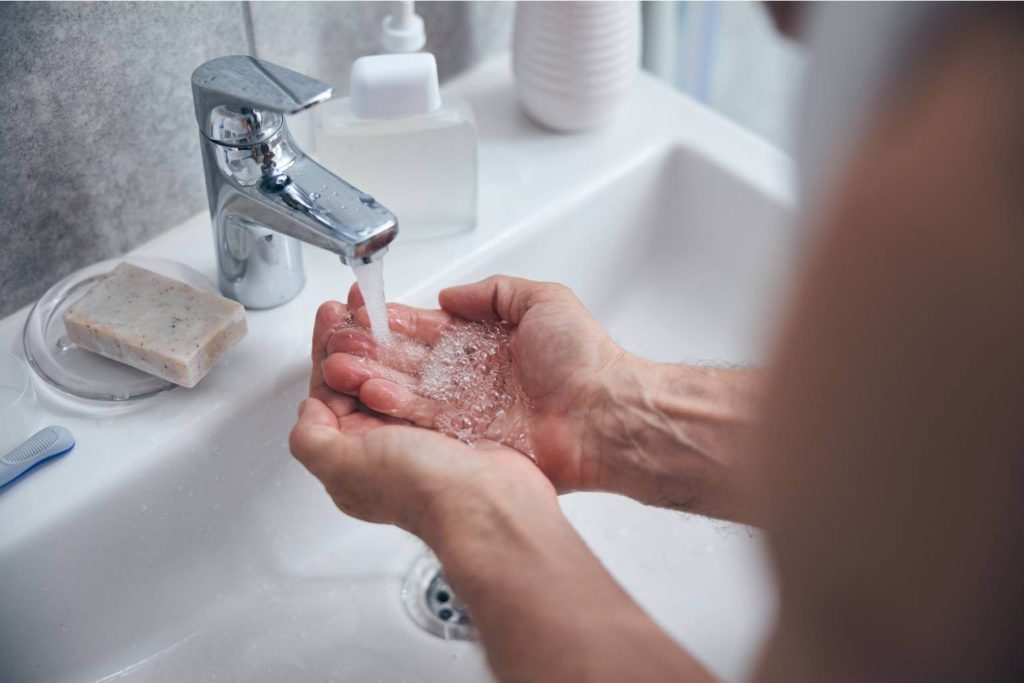Water Conservation Checklist for California Residents

The Homeowner’s Guide to Water Conservation in CA
Water conservation is a hot topic in California. After all, we’re no strangers to droughts and water shortages. But do you know how your water consumption compares with others?
With this checklist, you’ll be able to find out! Just run through this list and check off the various conservation measures you take. Afterward, you’ll have a clear understanding of where you stand in terms of water conservation, as well as how much money you stand to save on water.
1. Do You Turn Off The Water While Shaving, Brushing Teeth, Or Washing Dishes?
You might be surprised how much water you can save by just turning off the tap when you don’t really need to keep the water running.
If you’re in the habit of leaving taps running while washing dishes or brushing teeth, it’s time to adopt a new routine. If you take a few seconds to turn off the water when getting ready in the morning, you can easily save over 100 gallons of water per month.
If you’re in the habit of leaving water running, it could really benefit your community and your wallet to take those extra few seconds to turn it off and on as needed.
2. Do You Take A Short Shower Or Less Baths For Water Conservation?
Are you taking longer showers than necessary? If so, you might not be aware of how much water you’re wasting.
In fact, you can save up to 1,000 gallons of water per month by just reducing your shower by five minutes.
If you can’t bring yourself to take a shorter shower or baths, make sure the temperature and pressure are at their optimal settings. That way you won’t waste any extra energy or water, but you’ll still be able to enjoy a warm shower.
3. Do You Use A Broom Instead Of A Hose To Clean Up Outside?
If you have the time to clean up outside, consider using a broom instead of your hose.
Yes, it’ll be a bit more work. However, as an added benefit, you’ll get to enjoy some fresh air and get some exercise in the process. Plus, you’ll save yourself a considerable amount of water.
This is because hoses can use up to 1,000 gallons of water per hour!
If you have a hose that’s hooked up to your house, take it off the hook and put a broom with an attached dustpan in its place.
You’ll get to clean up the same amount of dirt without wasting any water or energy. Plus, your water department will thank you for being such a considerate customer.
4. Do You Check For Leaks In Your Home By Looking For Wet Spots Or Running Toilets?
If your home was built before 1994, it’s likely that you’ve got some leaks in your system.
What can cause these leaks? There are a number of possibilities. Perhaps the leak is coming from an improperly installed hose bib or maybe it’s due to faulty plumbing behind walls.
The good news is that you can easily remedy these leaks by identifying and repairing them. For example, a hose bib leak can be fixed by simply tightening the screws in their place.
But if you don’t feel comfortable investigating plumbing issues yourself, or have no time to do so, then call up a plumber for a repair job or inspection. This way you’ll save yourself both time and effort while achieving the peace of mind that comes with decades of experience.
5. Do You Fix Any Dripping Faucets To Help Water Conservation?
One of the easiest ways to save water is by simply fixing dripping faucets.
While this may seem like a minor problem, even small drips can result in hundreds of gallons wasted each month. In fact, one leaky faucet can waste up to 7,000 gallons per year!
A lot of people don’t realize that the water you’re paying for doesn’t just come out of your faucet. It also runs down the drain, spending money and energy for no purpose at all.
So, how can you fix your dripping faucets? In many cases, all it takes is tightening up loose parts inside your fixture or replacing a worn washer.
Whatever the case, make sure to check your faucets every now and then for dripping leaks. This way you can save money in water bills and energy costs while keeping your home safe from water damage.
6. Do You Only Run The Dishwasher When It’s Full?
Many people run their dishwashers with a smaller load than necessary so they don’t have to rinse off dirty pans or dishes before loading them into the machine.
If you are guilty of this approach, then you’re wasting water and energy for no reason at all. It’s better to always run your dishwasher on a full load so that you won’t waste any water or energy.
7. Does Your Home Have Low-flow, High-efficiency Appliances?
If you are in the market for new appliances and fixtures, consider replacing your old ones with low-flow, high-efficiency models.
Low-flow models use up to 25% less water than older appliances. They can save you between $30 and $80 per year in reduced energy costs. They are also kinder to the environment since they reduce carbon emissions significantly.
Nowadays, you can find low-flow models for all kinds of appliances. They provide the same household functionality as other models, but they use less water and energy to do so.
If you’re looking to replace some of your home’s major appliances (or if your toilet doesn’t function properly), look into getting a model with low-flow technology. You’ll be saving both money and energy in the process while remaining conscientious of your overall usage.
For a top-class residential plumber near you, pick up the phone and call the Plumbing Squad!
Read our Important Facts
